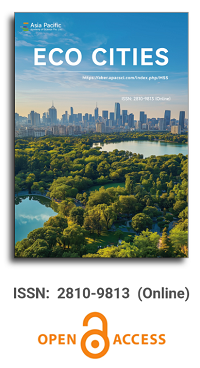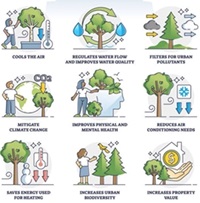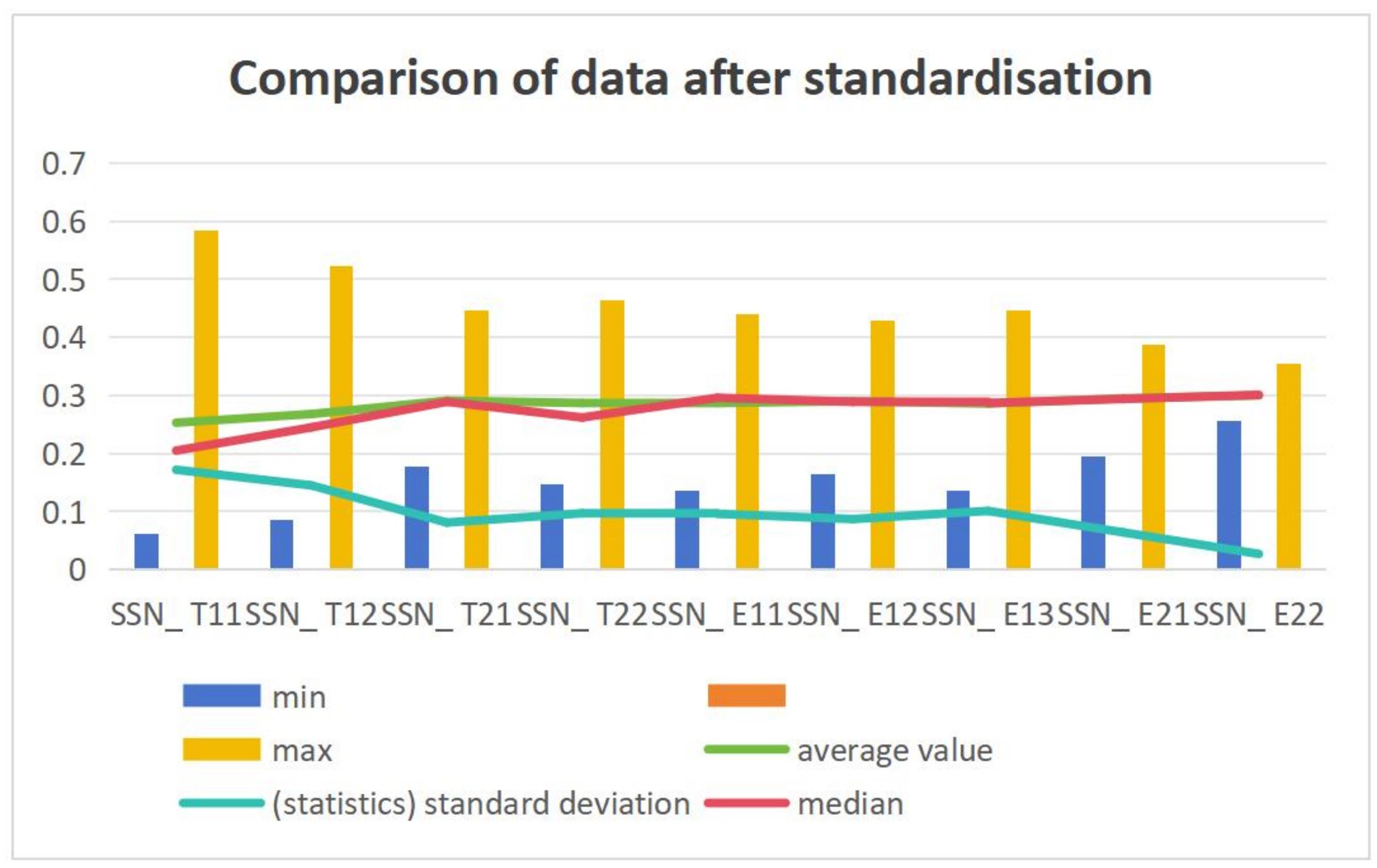
Publication Frequency
Semi-annual
Journal Articles
Search
Search scope
Volume Arrangement
Featured Articles

The exacerbation of climate change impacts within metropolitan areas is a well-documented phenomenon, often leading to severe consequences that pose significant risks to human populations. The impact of urban vegetation and planting design on these factors can be observed. However, it is worth mentioning that while there is an extensive body of literature on the consequences of climate change, there is a relatively small number of studies specifically focused on examining the role of vegetation as a mitigating factor in urban environments. This review paper aims to critically examine existing studies pertaining to the role of urban vegetation in mitigating the detrimental effects of the urban environment. The objective is to offer practical recommendations that can be implemented by city planners. By conducting a comprehensive examination of the literature available in Scopus, Web of Science, and Google Scholar, employing specific keywords pertaining to urban vegetation and climate change, we have identified five prominent concerns pertaining to the urban environment. These concerns encompass particulate matter, gaseous pollution, noise pollution, water runoff, and the urban heat island effect. The present analysis highlights that the impact of urban vegetation on the negative consequences of climate change cannot be unequivocally classified as either positive or negative. This is due to the fact that the influence of urban greenery is intricately connected to factors such as the arrangement, makeup, and dispersion of vegetation, as well as the specific management criteria employed. Hence, this research has the potential to enhance comprehension of the multifaceted nature of urban green spaces and establish a solid groundwork for subsequent investigations.

Tourism has been instrumental in fostering regional economic growth, enhancing the quality of life of residents, and boosting the image of urban areas in Shaanxi, thanks to the accelerated economic and social development of recent years. Nevertheless, the issue of aligning urban development and tourism in terms of space, resources, and the industrial chain remains a significant concern. This paper establishes an evaluation index system for tourism and urban development in the Shaanxi region from 2009 to 2019. It then employs the systematic coupling coordination model to conduct a comprehensive analysis of the coupling coordination degree of tourism and urban development in the region, as well as its various influencing factors. The study demonstrates that the coupling and coordination degree of tourism and urban development in the Shaanxi region exhibited a trend of continuous improvement from 2009 to 2019. The region underwent three stages of development: “uncoordinated development (2009–2011), transformation development (2012–2016), and coordinated development (2017–2019).” The coupling coordination level was elevated from “mild dissonance” to “intermediate coordination” in 2019. In contrast, the tourism economic development of Shaanxi cities remains unequal, as evidenced by the existence of two distinct categories of development: the “lagging tourism economy” and the “coordinated tourism economy.” The findings of this investigation indicate that the general trend of urban development and tourism in Shaanxi is favorable; however, the disparities in the progress of the tourism economy among cities necessitate additional regional coordination and cooperation. The theoretical support for the relevant research and a reference basis for tourism development planning and urban policy making are provided by the evaluation index system and the systematic coupling coordination model proposed in this paper. This will facilitate the sustainable and coordinated development of the tourism industry and cities in Shaanxi.
Biofences: A successful system for cleaning waterways in Montevideo, Uruguay
Article ID: 3037
Vol 6, Issue 1, 2025
DOI: https://doi.org/10.54517/ec3037
Vol 6, Issue 1, 2025
Received: 4 January 2025; Accepted: 8 February 2025; Available online: 19 February 2025; Issue release: 30 June 2025
Download PDF
Abstract
In Montevideo, waterways are used by citizens and by small and medium-sized commercial waste generators (both regulated and unregulated) as sites for the final disposal of solid waste. Additionally, they act as recipients of surface runoff from the basin during rainfall. The improper disposal of waste is considered one of the most underestimated forms of environmental degradation while also having a significant visual impact. To contribute to the development of comprehensive environmental management guidelines for water bodies, the Department of Environmental Engineering at the Institute of Fluid Mechanics and Environmental Engineering (DIA-IMFIA) developed a project in collaboration with the Montevideo City Government (IM). The main objective was to evaluate and propose recommendations to minimize the presence and persistence of solid waste in water bodies. For this purpose, a point in the Chacarita stream in Montevideo was chosen as the study area. A biofence was installed as a retention device to quantify waste, based on the analysis of retention devices successfully implemented in other Latin American countries. Non-returnable plastic beverage containers were reused for the construction of the biofence. The working methodology involved defining the study area together with the IM. Subsequently, in this area, a diagnosis was conducted to assess the current functioning of waste management systems. The installed biofence proved to be an effective system for retaining floating solid waste, capturing approximately 290 kg of waste during the 16 days it was in operation. Based on the results obtained, the DIA-IMFIA team has collaborated with the IM to train its staff in the construction, installation, and operation of bio-barriers. Throughout 2024, the IM has consolidated the implementation of bio-barriers in other water bodies in Montevideo as an institutional line of work.
Keywords
biofences; urban waterways; urban solid waste management; solid waste retention devices; Montevideo
References
- Santasusagna Riu A, Tort Donada J. Eau et espace urbain. Some theoretical considerations on the relationship between city and river (French). Documents d’Anàlisi Geogràfica. 2019; 65(2): 371-397. doi: 10.5565/rev/dag.513
- PNUMA. From Pollution to Solution: A global assessment of marine litter and plastic pollution. PNUMA; 2021.
- ONU. Perspectiva de la Gestión de Residuos en América Latina y el Caribe. ONU; 2018.
- Schmidt C, Krauth T, Wagner S. Export of Plastic Debris by Rivers into the Sea. Environmental Science & Technology. 2017; 51(21): 12246-12253. doi: 10.1021/acs.est.7b02368
- Patouillard C, Forest J. The spread of sustainable urban drainage systems for managing urban stormwater: A multi-level perspective analysis. Journal of Innovation Economics & Management. 2011; n°8(2): 141-161. doi: 10.3917/jie.008.0141
- Brown RR, Farrelly MA. Sustainable stormwater management in Australia: Professional perceptions on institutional drivers and barriers. In: Proceedings of the11th international conference on urban drainage, Edinburgh; 2008; Scotland, UK. pp. 605.
- Ramírez C, González E, Gianoli P, Ferrés J. Final Report CSIC-Maggiolo 25 Project: Solid waste management in the water system of Montevideo, oriented to its reduction (Spanish). Instituto de Mecánica de los Fluidos e Ingeniería Ambiental; 2023.
- Nęcka K, Szul T, Knaga J. Identification and Analysis of Sets Variables for of Municipal Waste Management Modelling. Geosciences. 2019; 9(11): 458. doi: 10.3390/geosciences9110458
- Fan L, Abbasi M, Salehi K, et al. Introducing an evolutionary-decomposition model for prediction of municipal solid waste flow: application of intrinsic time-scale decomposition algorithm. Engineering Applications of Computational Fluid Mechanics. 2021; 15(1): 1159-1175. doi: 10.1080/19942060.2021.1945496
- Toro ER, Narea MS, Pacheco JF, et al. General guide for household solid waste management (Spanish). Manuales de la CEPAL; 2016.
- Jambeck JR, Geyer R, Wilcox C, et al. Plastic waste inputs from land into the ocean. Science. 2015; 347(6223): 768-771. doi: 10.1126/science.1260352
- Schmitz EC, Leira AD. Plastic collection systems in the marine environment and proposed alternative plan (Spanish). Escuela Técnica Superior de Ingeniería Industrial de Barcelona; 2021.
- Dirección de Formación y Participación Social del Ministerio de Ambiente y Recursos Naturales (s.f). Guatemala biobardas. An example for the world (Spanish). Available online: https://efeverde.com/wp-content/uploads/2019/09/Mas-informaci%C3%B3n-sobre-la-biobarda_compressed.pdf (accessed on 13 December 2024).
- Acuña C, Marchena J, Vega V. Proposal of a plan for the mitigation of the contamination of the water mirror of the tiscapa lagoon in the department of managua in the period from april to july 2019 (Spanish) [Master’s thesis]. Furnace of nicaragua, nicaragua, Nicaragua, Nicaragua; 2019.
- Hernández. Analysis of the perception of pollution in urban streams in the micro-watershed of the riíto in tonalá, chiapas, MEXICO (Spanish) [master thesis]. EL Colegio de la Frontera norte; 2018.
- Abbate PS. Socio-spatial characterization of the River - City relation (Spanish) [Master’s thesis]. Universidad de la República; 2017.
- Helinski OK, Poor CJ, Wolfand JM. Ridding our rivers of plastic: A framework for plastic pollution capture device selection. Marine Pollution Bulletin. 2021; 165: 112095. doi: 10.1016/j.marpolbul.2021.112095
- Armitage N, Rooseboom A, Nel C, Townshend P. The removal of urban litter from storm-water conduits and streams: Paper 1 - The quantities involved and catchment litter management options. Water Research Commission; 2000.
- Bentos-Pereira G. Solid waste in the urban water system (Spanish) [Master’s thesis]. Universidad de la República. Uruguay; 2018.
- Oficina de Planeamiento y Presupuesto de la República [OPP]. Solid Waste Master Plan for Montevideo and Metropolitan Area. Montevideo (Spanish). Oficina de Planeamiento y Presupuesto de la República; 2005.
- Intendencia Montevideo. Physical and Sociodemographic Information by Municipality (Spanish). Intendencia Montevideo; 2017.
- Benítez SO, Lozano-Olvera G, Morelos RA, et al. Mathematical modeling to predict residential solid waste generation. Waste Management. 2008; 28: S7-S13. doi: 10.1016/j.wasman.2008.03.020
Supporting Agencies
Copyright (c) 2025 Author(s)
License URL: https://creativecommons.org/licenses/by/4.0/

This site is licensed under a Creative Commons Attribution 4.0 International License (CC BY 4.0).
Editor-in-Chief

Chinese Academy of Sciences, China
Indexing & Archiving
News & Announcements
2024-08-08
Meet our new EBMs!
The journal is pleased to welcome a new team of editorial board members dedicated to collaborating in order to elevate the journal's quality and prominence.
2024-07-11
Eco-cities are becoming a reality!
In the context of eco-city development, the term "eco-city" encompasses a multifaceted ecosystem characterized by the interdependence of natural, social, and economic systems. This concept emphasizes the need for sustainability through environmental friendliness, social equity, and economic growth. Various models of eco-cities, including garden cities, green cities, and landscape cities, reflect the ongoing exploration of achieving harmony between humans and nature in urban living environments.
Member Application
Journal Center
Asia Pacific Academy of Science Pte. Ltd. (APACSCI) specializes in international journal publishing. APACSCI adopts the open access publishing model and provides an important communication bridge for academic groups whose interest fields include engineering, technology, medicine, computer, mathematics, agriculture and forestry, and environment.



.jpg)

.jpg)



